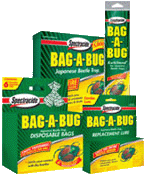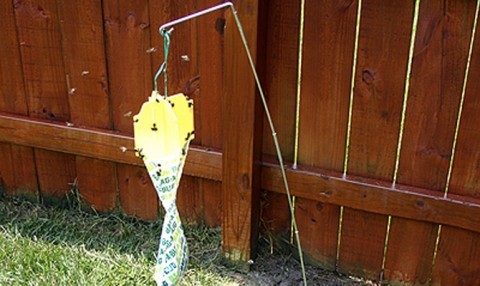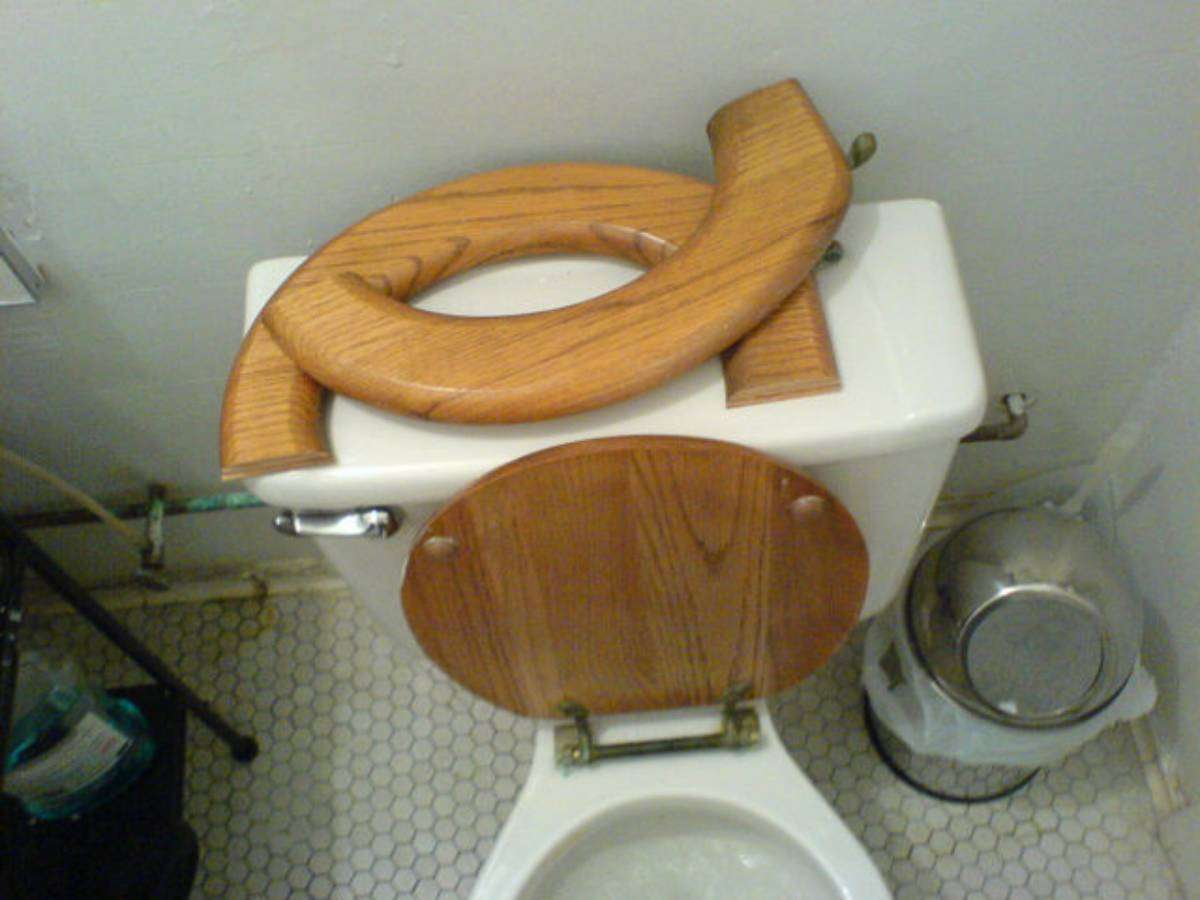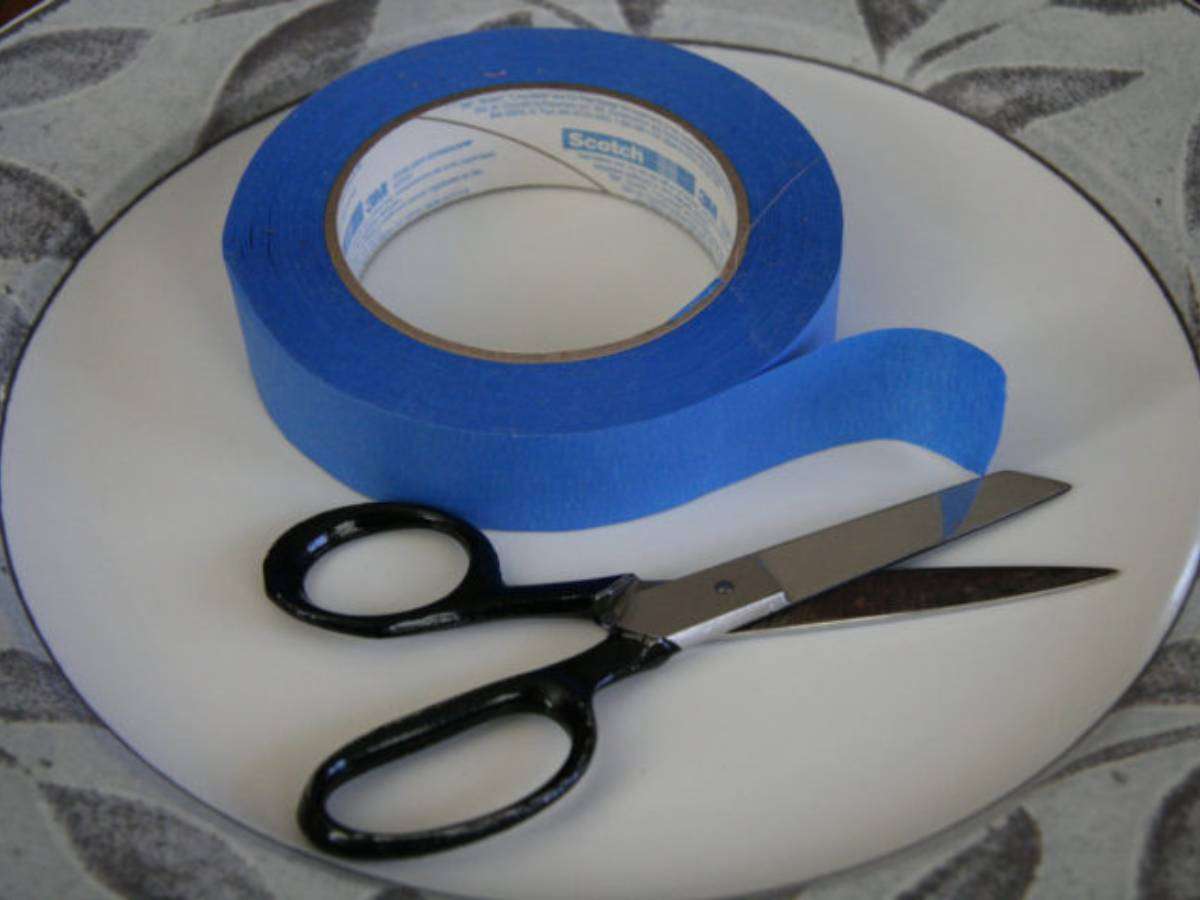You’ve probably seen them hanging out in people’s yards.
I never understood the whole Bag-a-Bug concept… that is, until WE needed to use them!
Listen to Bud Light’s Real Men of Genius ”Mr. Backyard Bug Zapper Inventor”:
Japanese Beetles In Tennessee
Last year was the first time that we noticed a problem with Japanese Beetles here in Franklin, Tennessee — even though we’ve lived in this same house for over 3 years.
I had read somewhere that you “just need to trot around the yard with a cup filled with soapy water” — then whenever you spot one of these buggers, you’re supposed to just flick it into the soapy water where it’s trapped and dies.
After you build up a collection of drowning beetles, you’re supposed to dispose of them.
Sounds easy enough… unless every tree you own is taller than you and the beetles are collecting on every single branch by the hundreds!
Lawn Doctor To The Rescue
In a panic last year, I called a lawn-maintenance company (The Lawn Doctor, love ’em!) to come right out and spray to save our trees. They did. It worked. No more Japanese Beetles on our trees, but we also had no more leaves on our trees at that point. We’d waited too long…
Alas, the leaves did grow back, but we were left with some pretty ugly trees through the rest of the summer.
Professional tree sprayings vs Bag-a-Bug Japanese Beetle traps
Our First Trial With Bag-a-Bug Japanese Beetles Traps
 This year, we thought we’d try Spectracide’s Bag-a-Bug Japanese Beetle Traps.
This year, we thought we’d try Spectracide’s Bag-a-Bug Japanese Beetle Traps.
They’re REALLY cheap. They’re REALLY easy. And, from what we’ve heard they’re REALLY effective. We got ours at Home Depot.
WARNING: It does seem like the Bag-a-Bug tends to attract Japanese Beetles from miles away, but it’s probably an exaggeration. Though I don’t know… they say the lure which hangs above the bag (“floral”, but it smells like citronella) is a powerful sexual attractant to both the male and the female beetles. By the looks of all the Japanese Beetles A) swarming around the one trap we have in the backyard and B) flying in droves from the nearby yards and over our fence to get to this trap, it’s like they’re saying, “Hey, I heard the sex is really good over here in this yard… follow me!”
From the first moment the packaging to that lure is opened… the mating call is on! So hurry up and get that bag attached and set up on a stake. Otherwise, you’re bound to have Japanese Beetles flying at your hands and into your hair trying to get to the lure. That’s kinda creepy.
The Proof Is In The Bag
 The very first day we set a trap (which is simply the act of hooking an empty plastic bag that happens to say “bag-a-bug” all over it onto a hard plastic yellow card, then sliding the “lure” into the pre-drilled slots in the plastic card, then hanging it from a tall silver peg in your yard) we barely had it up 5 hours before the first bag was full… to the brim!
The very first day we set a trap (which is simply the act of hooking an empty plastic bag that happens to say “bag-a-bug” all over it onto a hard plastic yellow card, then sliding the “lure” into the pre-drilled slots in the plastic card, then hanging it from a tall silver peg in your yard) we barely had it up 5 hours before the first bag was full… to the brim!
And that is the draw which keeps us using this particular system… the fact that it’s so incredibly satisfying to see a whole bag full of nasty leaf-munching beetles… in a bag and not on our leaves!
Disposing Of The Japanese Beetles
To dispose of the bag of Japanese Beetles (who are now having a mating fest piled up on top of one another inside that tall bug bag), you simply unhook the bag from the plastic card and dispose of it.
Which sounds easy enough… until you’re in the act of unhooking the bag from the plastic card when you discover that you’ve now become a powerful sexual magnet to hundreds of other Japanese Beetles who are flying at you from all directions! (I know, I need a picture of that.)
Then, even after you have the bag unhooked from the plastic card which holds the lure, you have to figure out a way to enclose that bag — keeping all the Japanese Beetles inside, as opposed to flying around or (more likely) falling like drunken sailors to the ground from all the ecstasy they’ve sustained from their beetle orgy.
We’ve found that the simplest method is to place the bag full of beetles upright into a plastic grocery bag or WalMart bag, then quickly tie into a knot the plastic bag. (Though most of the beetles are dazed and confused, so there’s really no flurry of beetles scampering to get out!)
UPDATE: Randi K. contacted me on Facebook with another great idea: “We just got one for us and one for mom & dads rose garden. So far so good. Here is a thought on what to do with the beetles. Recycle! Yes, I know. Any farm around that has chickens? Beetles are a great source of protein for them and taste like donuts.” (Thanks, Randi!)
Beetle Mania
Truth be told, those bags work wonders! They claim that each bag holds about 4,000 Japanese Beetles. So, based on the number of bags we’ve changed during the two weeks that we’ve used the Bag-a-Bug products, we’ve successfully trapped about 32,000 Japanese Beetles!
The first couple of days, we were changing the bag every few hours — filled to the brim. Then it became every other day. Now, 2 weeks into it, we’re changing the bag every 3rd or 4th day.
 But the amazing thing is… we’re still on the same lure. It’s all dried up, and has a few dead shriveling beetles trapped within it’s protective case (those beetles really had a good time in their last few moments of life!), but it’s still attracting Japanese Beetles in swarms.
But the amazing thing is… we’re still on the same lure. It’s all dried up, and has a few dead shriveling beetles trapped within it’s protective case (those beetles really had a good time in their last few moments of life!), but it’s still attracting Japanese Beetles in swarms.
And in the end, all of our trees still have all of their leaves — despite the fact that the Japanese Beetles started munching on them over 2 weeks ago — until we bought the Bag-a-Bug!
NOTE: You do need to dispose of the bags promptly when they get full, or they begin to stink. Same is true for the bags of dead beetles which are collecting in your outdoor garbage pail until garbage-pickup day… If you’re like us and keep your garbage pail in the garage… you might want to move it outside if it’s going to be a few days till the garbage truck comes around. Trust me on this one.
These Beetle Traps Are Not Harmful To Pets
Not only is this Spectracide product not harmful to pets (unless they eat it, maybe!), the whole Bag-a-Bug thing is actually quite entertaining to our Lab/Golden mix.
 He could sit for hours watching the beetles fly in for a little “afternoon delight,” only to never experience such graceful flight again.
He could sit for hours watching the beetles fly in for a little “afternoon delight,” only to never experience such graceful flight again.
It’s as if our dog is thinking, “Now, how are they so stupid?… Why are they suckered into this tiny little baggie-thing?… All they’ve got to do is fly up and out.”
Trust me, hours of entertainment for a backyard bark-a-lounger!
Spectracide Bag-a-Bug Facts

- The Bag-a-Bug Japanese Beetle Traps literally catch 3 out of 4 beetles they attract.
- Each bag is hourglass-shaped. Its unique design and slick coating on the inside eliminates escapes.
- Each bag holds up to 4,000 beetles.
- As soon as the bag is full or contains mostly dead beetles, whichever comes first, you should dispose of that bag since the smell of dead beetles will keep other Japanese Beetles away from the trap.
- If it rains and your bag is not full of Japanese Beetles yet, use a toothpick to poke drainage holes in the bottom of the bag, this will allow the water to drain out while keeping the beetles contained inside.
- The Bag-a-Bug traps are effective over a 5,000 square foot area, but I’d double-up if you have an especially large yard. Seems to me (and most others I’ve spotted using this product) that one in the front yard and one in the backyard works well — even if the square footage is less than 5,000 total!
- One to two lures will last through the entire Japanese Beetle season (6 to 7 weeks).
- According to the folks at Spectracide, it’s the most effective Japanese beetle lure system available.
Here’s what others think of the Spectracide Bag-a-Bug Japanese Beetle Traps.
Facts About Japanese Beetles
 First and foremost, Japanese Beetles are attracted to the mere sight of other Japanese Beetles. Thus, where there are a few beetles, there will soon be many beetles, and you could be fighting a losing battle if you do not choose SOME method of control. (The lure of the Bag-a-Bug simply magnifies their attraction and creates a central location for all to procreate — rather than, say… on the leaves of your trees.)
First and foremost, Japanese Beetles are attracted to the mere sight of other Japanese Beetles. Thus, where there are a few beetles, there will soon be many beetles, and you could be fighting a losing battle if you do not choose SOME method of control. (The lure of the Bag-a-Bug simply magnifies their attraction and creates a central location for all to procreate — rather than, say… on the leaves of your trees.)
Japanese Beetles are most active during the hottest part of the day.
You can plan on about 6 to 7 weeks for Japanese Beetles to be in your garden and eating the leaves off your trees. They usually arrive mid to late June and stay through mid to late August. Ugh!
They invade by the thousands… literally.
Here are other fun facts about Japanese Beetles.
It’s an old gardener’s joke: The easiest way to rid your yard of Japanese Beetles is to give a beetle trap as a gift to a neighbor 100 yards away!
DIY Japanese Beetle Traps
Here’s a similar do-it-yourself method for Japanese Beetle control: make your own Japanese Beetle traps!
https://www.youtube.com/watch?v=NTbORwzInBc
Here are some alternative methods to controlling Japanese Beetles.
UPDATE #1: For the record, it’s early August, and we find that we no longer need the bug bags here in Tennessee. In total we went through 11 bags and 2 lures. Thankfully, the stand itself is reusable year after year.
UPDATE #2: The Japanese Beetles are back again this summer, and we’re using Bag-a-Bug beetle traps again for the second year. So far so good… (We’re even using last year’s leftover lure!)
UPDATE #3: We needed even fewer bags to control the Beetles this year. One refill pack (of 6 or 8?) got us through the whole summer this time, our third year.








